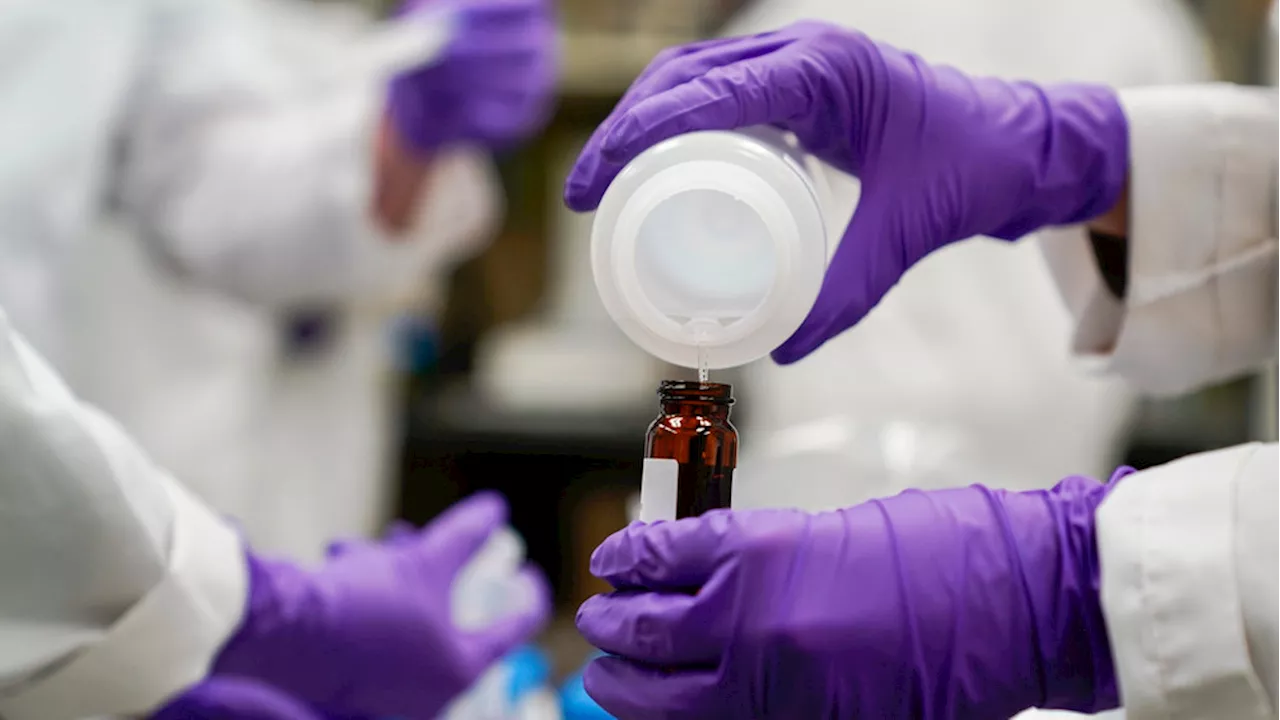The rule is the first national drinking water limit on toxic PFAS, or perfluoroalkyl and polyfluoroalkyl substances, which are widespread and long lasting in the environment.
The agency says it will reduce exposure for 100 million people and prevent thousands of illnesses, including cancer.
They are linked to a variety of health problems including cancer, thyroid disease, reproductive problems and heart and liver damage among other issues. The chemicals are found in the blood of nearly 97% of all Americans, according to the US Centers for Disease Control and Prevention.that said the chemicals are much more hazardous to human health than scientists originally thought and are probably more dangerous even at levels thousands of times lower than previously believed.
Water treatment facilities will have three years to test for the chemicals and two years to purchase, install and operate the technologies that can filter out forever chemicals if they exceed the standard. Public water systems must inform people about the level of PFAS in the drinking water. Drinking water probably accounts for at least 20% of people's exposure to these forever chemicals, Andrews said, but it could be more depending on the water utility.
"This problem is so large," NRDC's Reade said. "Again, we shouldn't take away from the fact that this is just a really monumental step forward."
Epa Pfas Drinking Water Epa Pfas Epa Pfas Chemicals Pfas In Water Pfas Chemicals Pfas Drinking Water Pfas Cancer Pfas Regulations Pfas In Drinking Water Forever Chemicals Pfas Forever Chemicals Pfas News
United Kingdom Latest News, United Kingdom Headlines
Similar News:You can also read news stories similar to this one that we have collected from other news sources.
 EPA Announces New Drinking Water Standards to Limit Exposure to PFAS ChemicalsThe Environmental Protection Agency (EPA) has introduced new drinking water standards to reduce exposure to PFAS chemicals, which have been found to be harmful to human health and the environment. PFAS, or per- and polyfluoroalkyl substances, are man-made chemicals used in various industries and consumer products since the 1940s. These chemicals, known as 'forever chemicals' due to their long-lasting molecular bonds, have been accumulating in water, food, and air.
EPA Announces New Drinking Water Standards to Limit Exposure to PFAS ChemicalsThe Environmental Protection Agency (EPA) has introduced new drinking water standards to reduce exposure to PFAS chemicals, which have been found to be harmful to human health and the environment. PFAS, or per- and polyfluoroalkyl substances, are man-made chemicals used in various industries and consumer products since the 1940s. These chemicals, known as 'forever chemicals' due to their long-lasting molecular bonds, have been accumulating in water, food, and air.
Read more »
 EPA announces national standard to limit PFAS in drinking waterThe rule is the first national drinking water limit on toxic PFAS, or perfluoroalkyl and polyfluoroalkyl substances, which are widespread and long lasting in the environment.
EPA announces national standard to limit PFAS in drinking waterThe rule is the first national drinking water limit on toxic PFAS, or perfluoroalkyl and polyfluoroalkyl substances, which are widespread and long lasting in the environment.
Read more »
 EPA Sets New Limits for PFAS in Drinking WaterThe U.S. Environmental Protection Agency (EPA) has announced new limits for per- and polyfluoroalkyl substances (PFAS) in drinking water, aiming to reduce exposure and prevent illnesses. The rule will require utilities to reduce PFAS levels to the lowest measurable level, benefiting 100 million people. While health advocates support the move, water utilities express concerns about the cost of implementing treatment systems.
EPA Sets New Limits for PFAS in Drinking WaterThe U.S. Environmental Protection Agency (EPA) has announced new limits for per- and polyfluoroalkyl substances (PFAS) in drinking water, aiming to reduce exposure and prevent illnesses. The rule will require utilities to reduce PFAS levels to the lowest measurable level, benefiting 100 million people. While health advocates support the move, water utilities express concerns about the cost of implementing treatment systems.
Read more »
 EPA sets first national limits on PFAS in drinking waterThe new Environmental Protection Agency regulations limit the two most common PFAS chemicals — PFOA and PFOS — to four parts per trillion in drinking water, close to the level of detection. The agency says the goal for these chemicals should be zero.
EPA sets first national limits on PFAS in drinking waterThe new Environmental Protection Agency regulations limit the two most common PFAS chemicals — PFOA and PFOS — to four parts per trillion in drinking water, close to the level of detection. The agency says the goal for these chemicals should be zero.
Read more »
 EPA imposes first limits on PFAS chemicals in drinking waterAria Bendix is the breaking health reporter for NBC News Digital.
EPA imposes first limits on PFAS chemicals in drinking waterAria Bendix is the breaking health reporter for NBC News Digital.
Read more »
 How the EPA's new PFAS rules differ from Mass.'s current 'forever chemical' regulationsThe federal government has announced new regulations for PFAS. The so-called 'forever chemicals' are used in products like food packaging, cookware and clothing but have leeched into water supplies. Massachusetts is one of 10 states with its own PFAS rules, but the new federal regulations are stricter. Here's how that will impact the commonwealth.
How the EPA's new PFAS rules differ from Mass.'s current 'forever chemical' regulationsThe federal government has announced new regulations for PFAS. The so-called 'forever chemicals' are used in products like food packaging, cookware and clothing but have leeched into water supplies. Massachusetts is one of 10 states with its own PFAS rules, but the new federal regulations are stricter. Here's how that will impact the commonwealth.
Read more »
